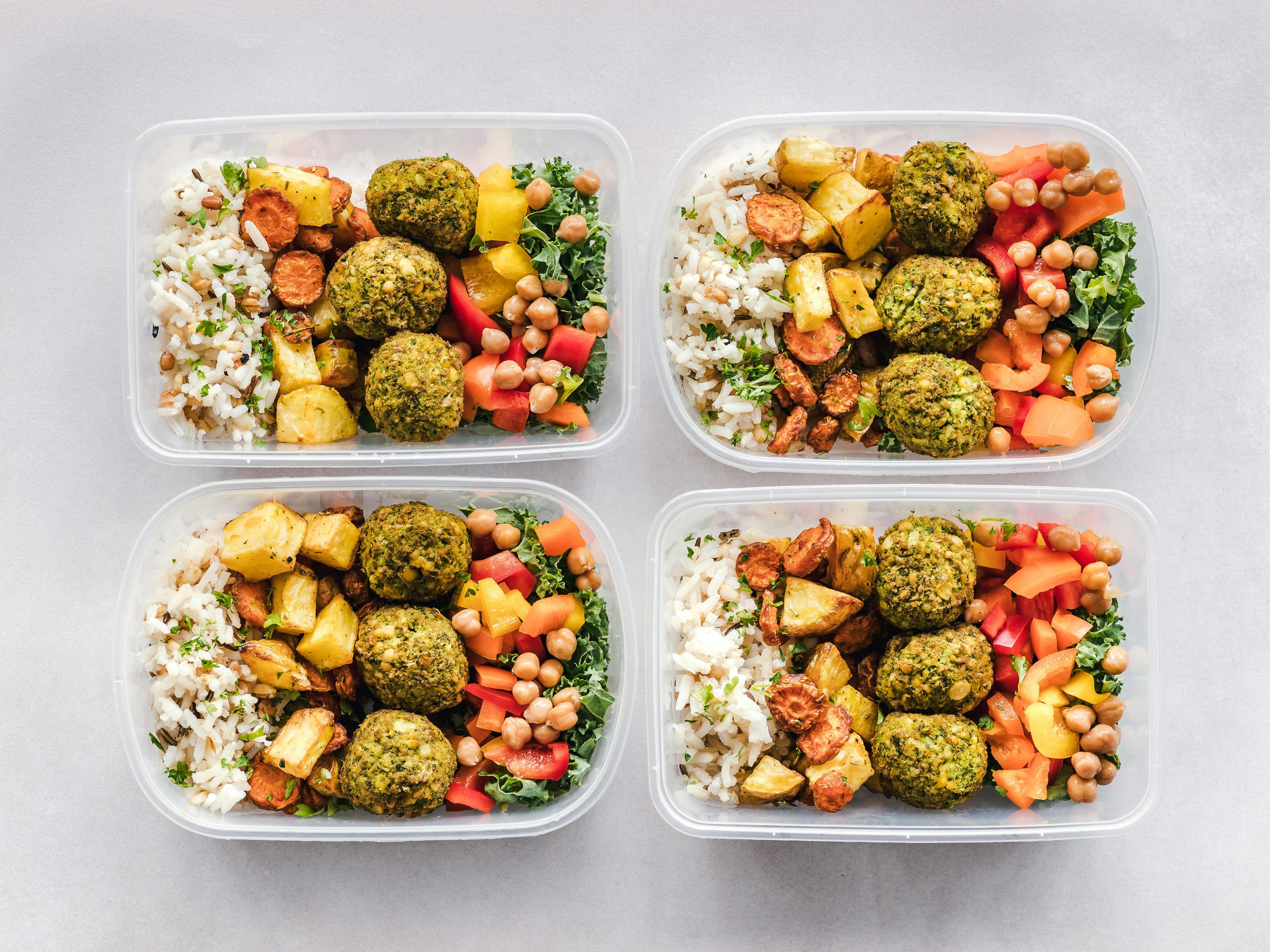Meal Prep Guide for Busy Professionals: Eat Healthy Without the Stress
Between meetings, deadlines, and commutes, finding time to eat healthy can feel impossible. But with strategic meal prep, you can enjoy nutritious meals all week long without spending hours in the kitchen daily.
Why Meal Prep Works for Busy People
Meal prepping isn't just a fitness trend – it's a practical solution for busy professionals who want to:
- Save Time: Cook once, eat multiple times
- Save Money: Reduce takeout expenses and food waste
- Eat Healthier: Control ingredients and portion sizes
- Reduce Stress: Eliminate daily "what's for dinner?" decisions
The Busy Professional's Meal Prep Strategy
Sunday Power Hour: Your Weekly Foundation
Dedicate 2-3 hours every Sunday to set yourself up for success:
- Plan Your Menu (15 minutes)
- Grocery Shop (45 minutes)
- Batch Cook (90-120 minutes)
- Portion and Store (15 minutes)
The 80/20 Rule
Focus on preparing 80% of your meals and allow 20% flexibility for social dining or trying new restaurants.
Essential Meal Prep Equipment
You don't need a fancy kitchen – just these basics:
- Glass containers with tight-fitting lids
- Slow cooker or Instant Pot for hands-off cooking
- Sheet pans for roasting vegetables and proteins
- Good knife and cutting board
- Food scale for portion control
The Perfect Meal Prep Formula
Every meal should include:
Protein (25-30% of your plate)
- Grilled chicken breast
- Baked salmon
- Hard-boiled eggs
- Quinoa or legumes
Vegetables (40-50% of your plate)
- Roasted broccoli and Brussels sprouts
- Steamed green beans
- Raw carrots and bell peppers
- Leafy greens for salads
Complex Carbs (20-25% of your plate)
- Brown rice or quinoa
- Sweet potatoes
- Whole grain pasta
- Steel-cut oats
5 Go-To Meal Prep Recipes
1. Mediterranean Chicken Bowls
- Grilled chicken with herbs
- Roasted vegetables
- Quinoa
- Hummus and olives
2. Taco Tuesday Prep
- Seasoned ground turkey
- Black beans
- Brown rice
- Chopped vegetables for easy assembly
3. Asian-Inspired Salmon
- Teriyaki-glazed salmon
- Steamed broccoli
- Brown rice
- Edamame
4. Breakfast Power Bowls
- Greek yogurt
- Berries and nuts
- Granola
- Hard-boiled eggs
5. Veggie-Packed Chili
- Make a big batch with beans, vegetables, and lean ground meat
- Portion into containers for quick lunches
Storage and Food Safety Tips
Proper Storage Times:
- Cooked proteins: 3-4 days in refrigerator
- Cooked grains: 4-5 days in refrigerator
- Raw vegetables: 5-7 days in refrigerator
- Most prepared meals: 3-4 days in refrigerator
Pro Storage Tips:
- Let food cool completely before refrigerating
- Store sauces and dressings separately
- Use clear containers to see contents easily
- Label containers with contents and date
Time-Saving Hacks for Maximum Efficiency
Batch Cooking Techniques:
- Oven Efficiency: Use multiple racks to cook different foods simultaneously
- One-Pan Meals: Sheet pan dinners minimize cleanup
- Slow Cooker Magic: Set it and forget it while you do other prep
- Double Recipes: Make extra portions for the freezer
Prep Shortcuts:
- Buy pre-cut vegetables when budget allows
- Use rotisserie chicken for quick protein
- Cook grains in large batches and freeze portions
- Prepare snack portions in advance
Overcoming Common Meal Prep Challenges
"I Don't Have Time"
Solution: Start with prepping just 2-3 meals. Even partial meal prep saves time and money.
"Food Gets Boring"
Solution: Prep components separately and mix/match throughout the week. Use different sauces and seasonings.
"I Travel Too Much"
Solution: Focus on portable meals and snacks. Pack coolers for road trips, research healthy options at your destinations.
Building Your Meal Prep Habit
Week 1: Start Small
Prep just lunches for 3 days
Week 2: Add Breakfast
Include overnight oats or breakfast bowls
Week 3: Full Integration
Prep breakfast, lunch, and 2-3 dinners
Week 4: Optimize and Refine
Adjust portions, try new recipes, streamline your process
Meal Prep for Different Dietary Goals
Weight Loss
- Focus on vegetables and lean proteins
- Control portions with smaller containers
- Include high-fiber foods for satiety
Muscle Building
- Increase protein portions
- Include complex carbohydrates
- Don't forget healthy fats
Maintenance
- Balance all macronutrients
- Include variety for enjoyment
- Allow flexibility for social eating
Your Action Plan
This week, commit to:
- Planning 30 minutes to plan next week's meals
- Shopping with a detailed list
- Prepping for 2 hours on Sunday
- Tracking how much time and money you save
Final Thoughts
Meal prep isn't about perfection – it's about progress. Start small, stay consistent, and adjust as you learn what works for your lifestyle.
Remember, the goal isn't to eat the same thing every day forever. It's to create a sustainable system that supports your health goals while fitting into your busy life.
Want to optimize your nutrition further? Use our Macro Calculator to determine your ideal macronutrient ratios, or check out our guide on hydration and performance.
Key Takeaways
Consistency beats perfection when building healthy habits
Progressive overload is key to continuous improvement
About the Author
Mike Rodriguez
Certified Fitness Professional & Nutrition Specialist
Expert fitness professional with over 10 years of experience helping people achieve their health and fitness goals through evidence-based training and nutrition. Certified by ACSM and NASM with specializations in weight management and sports performance.



